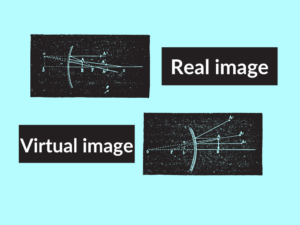Refracting Type Telescope vs Reflecting Type Telescope: A Comprehensive Comparison
Telescopes have revolutionized our understanding of the universe by allowing us to explore the depths of space and unravel its mysteries. There are two main types of telescopes: refracting type telescopes and reflecting type telescopes. In this article, we will delve into the characteristics, examples, and uses of each type, and highlight their differences.
What is a Refracting Type Telescope?
A refracting type telescope, also known as a refractor, uses a combination of lenses to gather and focus light. It consists of a long tube with a large lens at the front, called the objective lens, and a smaller lens, called the eyepiece, at the back. The objective lens refracts light, bending it and converging it to a focal point where the eyepiece magnifies the image for observation.
Examples of Refracting Type Telescopes:
Some well-known examples of refracting type telescopes include:
- Galileo’s telescope
- Hubble Space Telescope
- Kepler Space Telescope
Uses of Refracting Type Telescopes:
Refracting telescopes have various applications, such as:
- Astronomy and stargazing
- Observing celestial bodies
- Terrestrial viewing and surveillance
- Photography
What is a Reflecting Type Telescope?
A reflecting type telescope, also known as a reflector, uses a series of mirrors to capture and focus light. It consists of a large concave mirror as the primary element, which reflects light back to a secondary mirror near the top of the telescope. The secondary mirror then reflects the light to the eyepiece, which magnifies the image.
Examples of Reflecting Type Telescopes:
Some prominent examples of reflecting type telescopes include:
- Newtonian telescope
- Cassegrain telescope
- Prime focus telescope
Uses of Reflecting Type Telescopes:
Reflecting telescopes find applications in:
- Astronomy and cosmology
- Deep space exploration
- Astrophotography
- Research and scientific studies
Differences between Refracting Type and Reflecting Type Telescopes:
| Difference Area | Refracting Type Telescope | Reflecting Type Telescope |
|---|---|---|
| Optical Components | Uses lenses as objective and eyepiece | Uses mirrors as primary optical elements |
| Image Quality | Can suffer from chromatic aberration | No chromatic aberration |
| Size and Weight | Generally compact and lightweight | Can be larger and heavier due to mirrors |
| Cost | Relatively less expensive | Can be more expensive due to mirror fabrication |
| Field of View | Smaller field of view | Wider field of view |
| Maintenance | Requires minimal maintenance | May require occasional mirror alignment |
| Longevity | Longer lifespan | May require mirror replacement over time |
| Cooling Time | Does not require cooling time | May need time to cool down to match ambient temperature |
| Portability | Highly portable | Less suited for frequent transportation |
| Image Orientation | Upright image orientation | Inverted image orientation |
Conclusion:
In conclusion, refracting type telescopes and reflecting type telescopes have different optical designs and characteristics that make them suitable for various applications. Refractors excel at producing crisp images and are lightweight and portable, while reflectors offer wider fields of view and are more suitable for deep space exploration. The choice between the two ultimately depends on the specific needs and preferences of the observer.
People Also Ask:
- What are refracting type telescopes?
- What are reflecting type telescopes?
- Which type of telescope is better?
- Why do refracting telescopes suffer from chromatic aberration?
- Do reflecting telescopes require more maintenance than refracting telescopes?
Refracting type telescopes use lenses to gather and focus light, providing clear images for observing celestial bodies.
Reflecting type telescopes use mirrors to capture and reflect light, allowing for research, deep space exploration, and astrophotography.
The choice of telescope depends on the intended use. Refracting telescopes are great for terrestrial viewing and stargazing, while reflecting telescopes excel in deep space exploration and research.
Refracting telescopes suffer from chromatic aberration due to the dispersion of different colors of light, leading to color fringing around objects.
Reflecting telescopes may require occasional mirror alignment, while refracting telescopes generally require minimal maintenance.



